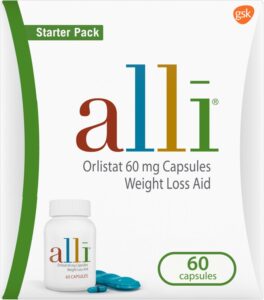It’s essential to manage your ad campaigns with the goal of its optimization. It can be done through data that comes out after campaign launch. Let’s look into the ways to optimize your paid search campaigns.
1. Have Understanding of Channels and Campaigns
It’s essential to see which of your campaign is performing best when you are advertising on multiple channels. You can allocate your budget accordingly when you have the understanding of which channels and campaigns are performing best for your primary KPI (Key performance indicator).
2. Bid Adjustments
Bid adjustment can be done at any level of optimization, but primarily it’s done at the keyword level. There are many aspects of search campaign where bid adjustment can be applied. It includes bid adjustment by location, device, audiences, hours of a day, the day of the week, etc.
Bid adjustment by hours of day and day of the week
This is based on performance is done to ensure maximize results. You can consider showing your campaign on top performing hours, or you can say the peak hours when your users are all over the internet.
Bid adjustment by location
It is another important aspect. Every location performs differently from others. You can bid down your bid adjustments or simply exclude them for poor performing locations.
Bid Adjustment by Keyword
Perform bid adjustments for your target keywords. Look for the keywords that are simply not performing despite making bid adjustments, testing match types, and reviewing search queries. If there are any, then you should remove those keywords from your search campaign.
3. Budget and Search Impression Share
Your campaign’s budget and search impression share are another two most important aspects that you should optimize. Your top performing campaigns get the majority of your budget. So keep tracking your search impression share for your campaigns that perform best to avoid impression share loss due to budget.
4. Landing Page Optimization

Landing pages are the most important aspect of optimization which is usually overlooked or ignored by many companies. Keywords and ads get your users to your website, but landing pages are responsible for closing the whole deal. Landing pages are the most responsible for conversions. So you should give proper attention to landing page optimization. Optimizing your landing pages include:
- A Strong Headline is relevant to your search campaign keyword and ad text that can compel your users to stay with you.
- Clean and Attractive Design that looks professional and trustworthy with your brand.
- Concise and Convincing that can communicate well with what you are offering.
- Create user-friendly landing page forms.
- Clickable and eye-catching buttons with clear call-to-action.
5. Ad Copy Optimization

Ad copy should be tested and optimized. An ad copy should have the features, benefits, and a call-to-action. Here are the optimization tricks that you can do for your ad copies:
- Perform A/B testing with different variants of your ad copy to get better optimization results. Steps to improve the CTR of your search ad are:
- Create two variants of ad copy
- Run them simultaneously
- Check which ad copy has returned higher CTR
- Remove the ad copy with lower CTR
- Repeat the steps.
- You should take care of the character limits of your ad copy. Look below for the character limit:
- Avoid Repetition – Avoid repeating your characters. Do not state same information more than once within a single advertisement. Make use of the limit of characters to give important and full information about your ad.
- Experiment With Different Call-to-actions – Keep experimenting with different and unconventional call-to-actions. You should be creative enough with your ad copy in spite of the fact that you have less space for your search campaigns.
- Ad Text Optimization – Improve your ad copies and get above average CTR or click-through rates.
- Use ad extensions
- Go for creating emotional ads
- Switch to more exciting offers
- Go for dynamic keyword insertion
- Active Verb Insertion – Include active verbs to make your ad more compelling, interesting, and entice the user to click on them. They are more dynamic and serve as a call-to-action. Look for the below ad copies. There is no such difference in the two ad copy variants expect the inclusion of ‘increase’ active verb in the headline of the second ad copy.
6. Adding Negative Keywords for Optimization
Are you facing issue with low click-through rates? Are you wasting your budget on irrelevant keywords? Then it’s high time for you to change your strategy and include negative keywords to stop showing your ads to the people who are not interested in your ads. Regain your control over your search campaigns by including negative keywords. Negative keywords prevent your ad from being shown to the wrong people. The search engines would know not to show your ads if someone searched by using phrases that include your negative keywords.
7. Ad Optimization for Different Devices

Are your web pages and landing pages device friendly? How your campaigns perform or shown on devices like mobile, Tablet, computers, and laptops? Do adjustments if necessary to make your ad device-friendly as it’s an important aspect to review.




